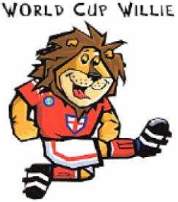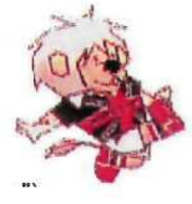
As the England Women’s Football team approach the World Cup, and with the FIFA Women’s World Cup and the Lionesses all over the news, Geoff Weller and Joel McDonald have some thoughts on some related trade mark issues.
Firstly, do all readers think that LIONESSES is a registered trade mark (at least in the UK) and if so, know who it is owned by? The answer is yes and by The Football Association (many of their marks are listed here).
Secondly, this weekend an England team will attempt to win a senior World Cup that they have done only once before back in 1966. The mascot for that tournament was the lion World Cup Willie and I recall that it is almost 16 years ago that we had a court decision about the ownership of the World Cup Willie trade mark. Back in October 2007, the UK high court gave a decision (link here) in which they looked at the IP issues in a dispute over the World Cup Willie trade marks filed by Jules Rimet Cup Limited and attacked by the FA.
The images of Willie at issue were these two with the trade mark application on the left and the FA mark on the right.
 v .
v .
The facts of the case begin with Jules Rimet filing two UK trade mark applications - one for the word mark WORLD CUP WILLIE, and another for a device featuring a lion in a football kit.
The FA threatened opposition and contacted Jules Rimet's licensees. Jules Rimet launched the court proceedings seeking a declaration that their applications couldn’t be opposed on the grounds the FA had stated and seeking relief for the FA’s interference with their business affairs.
The FA counterclaimed on the following bases:
- the FA owned the copyright in the original drawing of the 1966 World Cup mascot and Jules Rimet had infringed that copyright through their use of the device mark
- the FA owns goodwill in the drawing of the mascot and the name and Jules Rimet is passing off and so the applications should be refused under section 5(4)(a) TMA 1994
- the applications were made in bad faith and so should be refused under section 3(6) TMA 1994.
The FA also began opposition proceedings at the Registry. A hearing at the High Court decided the issue should be decided at the High Court rather than the Registry.
In summary, the High Court held it was a 2:1 win for the FA. It was found that:
- Jules Rimet's device mark was copied from the original, but did not reproduce a substantial part of the World Cup Willie drawing so it did not infringe the copyright
- the FA could have prevented the use of the two trade marks as applied for by Jules Rimet by an action for passing off
- Jules Rimet's applications were made in bad faith.
Two points of particular interest come out of this decision. Firstly, that residual goodwill was found to exist from 1966 despite an apparent lack of use and intention to use during the intervening period. Secondly, even where the applicant did not think they were doing anything wrong, and they had even take legal advice beforehand, that they were still found to have filed in bad faith.
So perhaps if the Lionesses® win on Sunday they can look forward, not just to fame now, but goodwill that lasts as long as their lion forefather’s, World Cup Willie.
Send us your thoughts:
Would you like to read more articles like this?
Building 1000
Cambridge Research Park
CB25 9PD
Fax. 01223 425258
info@iamstobbs.com
Privacy policy
German office legal notice
Cookie Declaration
Complaints Policy
Copyright © 2022 Stobbs IP
Registered Office: Building 1000, Cambridge Research Park, Cambridge, CB25 9PD.
VAT Number 155 4670 01.
Stobbs (IP) Limited and its directors and employees who are registered UK trade mark attorneys are regulated by IPReg www.ipreg.org.uk

